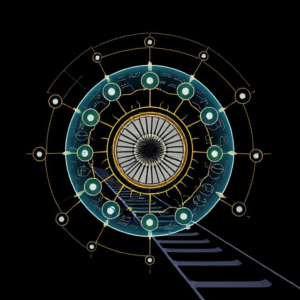Indian Railways is a massive organization, and to manage such a large network, it’s divided into zones and divisions. Let’s break down this structure in a simple way:
1. What is a Railway Zone?
A zone is a large administrative region that manages the operations of trains, stations, and infrastructure in a specific area of the country. Think of a zone as a big area, like a state, that has several local train operations to manage.

2. Railway Zones in India:
There are 18 zones in Indian Railways. Each zone is responsible for the operation, maintenance, and management of the rail network in a particular region. These zones are further divided into divisions for easier management.
Here are some well-known zones:
- Northern Railway (NR) – Covers Delhi and surrounding areas.
- Western Railway (WR) – Covers Mumbai, Gujarat, and Rajasthan.
- Southern Railway (SR) – Covers Tamil Nadu, Kerala, and parts of Andhra Pradesh and Karnataka.
- Eastern Railway (ER) – Covers West Bengal, Bihar, and Jharkhand.
3. What is a Railway Division?
A division is a smaller unit within a zone. Each division manages the railway stations, trains, and tracks in a specific area, similar to how a district works within a state.
4. Number of Divisions:
There are a total of 75 divisions within the 18 railway zones. Some large zones have multiple divisions, while smaller zones have fewer divisions.
For example:
- Northern Railway (NR) has 6 divisions (like Delhi, Ambala, and Firozpur).
- Southern Railway (SR) has 4 divisions (like Chennai, Madurai, and Trivandrum).
5. The Role of a Division:
A division is responsible for several important tasks:
- Train operations: Ensuring trains run on time and safely within their area.
- Track maintenance: Regular checks and repairs to keep the tracks in good condition.
- Station management: Running the stations, ensuring safety, cleanliness, and passenger services.
- Staffing: Managing the people working in the division, including drivers, station masters, and maintenance workers.
Each division is headed by a Divisional Railway Manager (DRM), who is in charge of all operations and activities within that division.
6. Example of How It Works:
Let’s say the Western Railway (WR) zone is responsible for the railway network in Gujarat, Maharashtra, and parts of Rajasthan. Within the Western Railway zone, there are several divisions:
- Mumbai Division
- Vadodara Division
- Rajkot Division
Each of these divisions has a DRM who manages the local operations, ensuring that trains run smoothly, stations are well maintained, and track repairs are done on time.
Summary:
- Zones are the large, primary administrative regions of Indian Railways.
- Divisions are smaller units within each zone, responsible for the management of trains, stations, and tracks.
- Indian Railways is divided into 18 zones and 75 divisions across the country.
- Each division is headed by a Divisional Railway Manager (DRM) who ensures the smooth running of operations in that area.
In short, the division structure helps Indian Railways run efficiently by breaking down the huge task of managing the country’s railway system into smaller, more manageable units.
Keywords: Indian Railway, Railway











